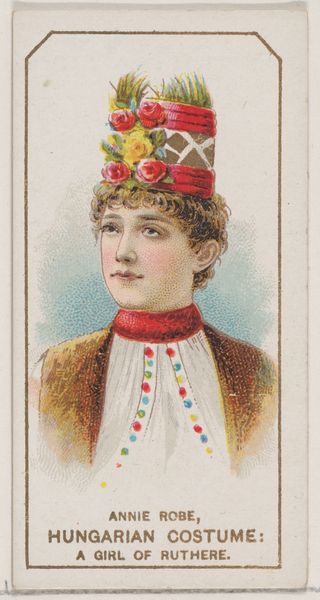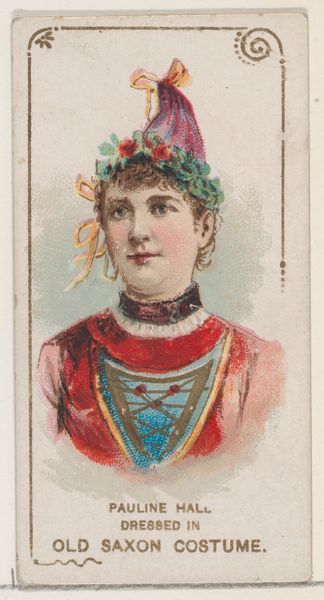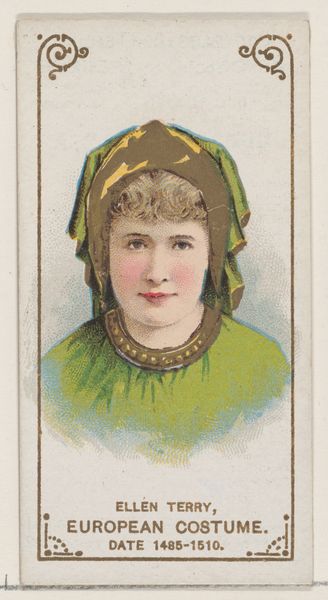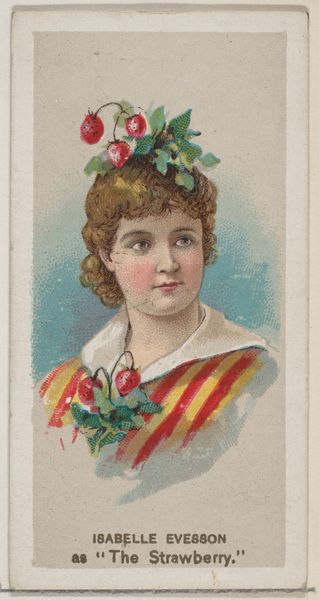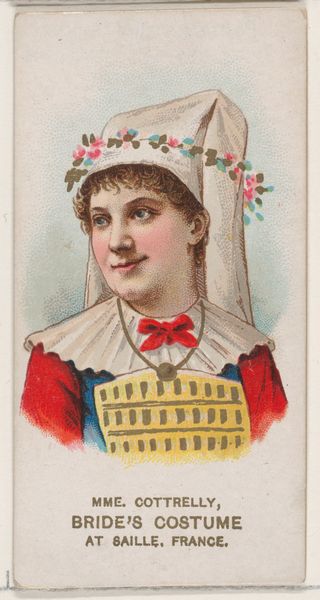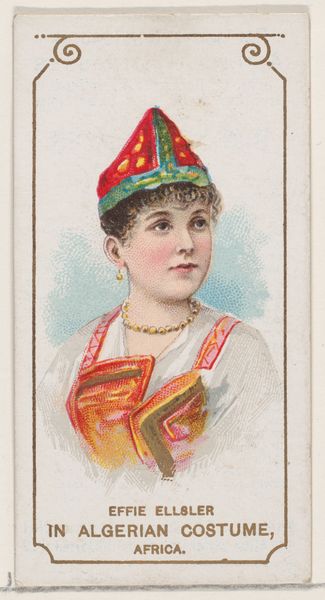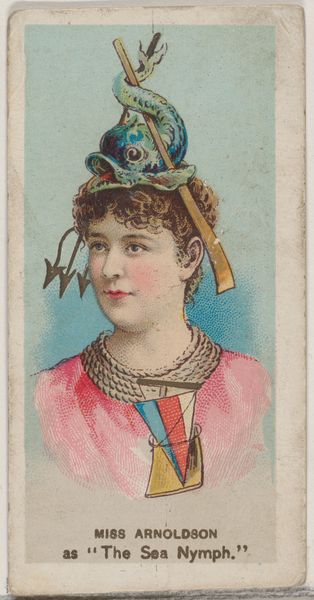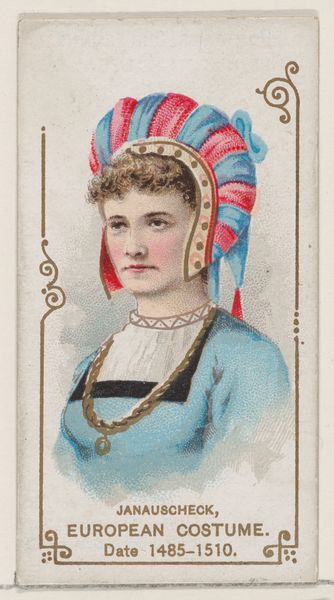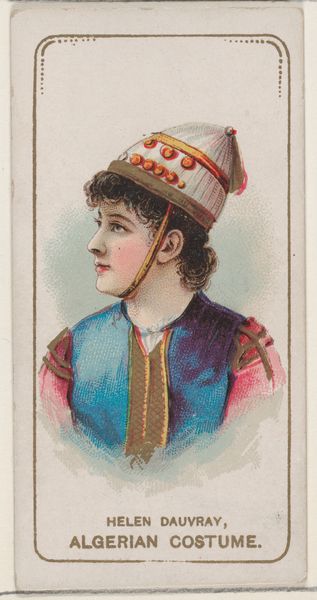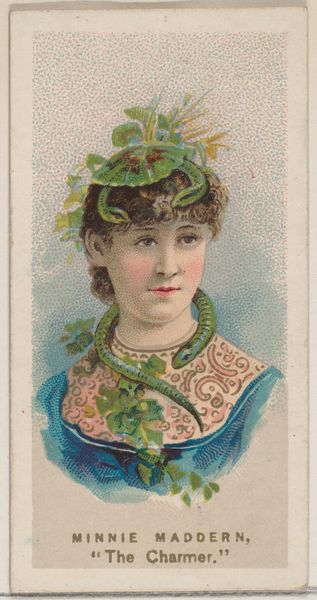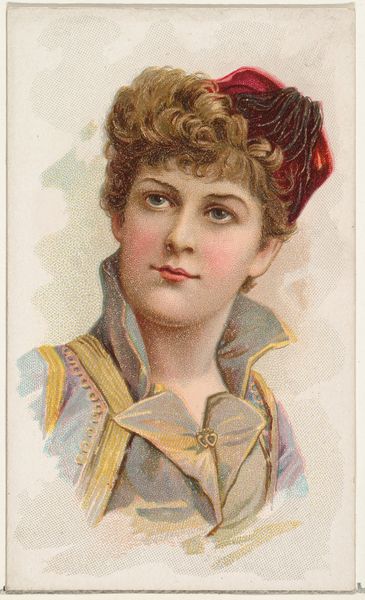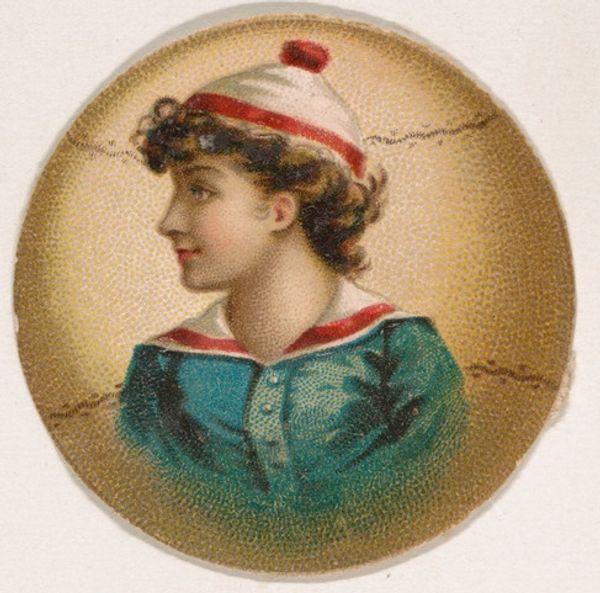
J. K. Emmet in the Modern Costume of a Tyrolean Peasant, from the set Actors and Actresses, First Series (N70) for Duke brand cigarettes 1888 - 1889
0:00
0:00
drawing, coloured-pencil, print
#
portrait
#
drawing
#
coloured-pencil
# print
#
impressionism
#
caricature
#
coloured pencil
#
men
#
genre-painting
Dimensions: Sheet: 2 3/4 x 1 1/2 in. (7 x 3.8 cm)
Copyright: Public Domain
Curator: Immediately, the slight smirk combined with the peasant costume… something about it feels a little subversive, no? Editor: Indeed. What you're responding to, I think, comes from the history embedded in this unassuming little print. This is J.K. Emmet in the guise of a "Tyrolean Peasant" for a series of W. Duke, Sons & Co. cigarette cards made between 1888 and 1889, part of a larger set featuring actors and actresses. Think about how tobacco companies at the time often traded on exotification and theatrical portrayals of class and cultural others. Curator: So this is less a straight portrait and more like… manufactured aspiration sold alongside a pack of cigarettes? The very material existence as a trade card is interesting here – mass-produced and meant for consumption. How does that fit with portraying this figure? Editor: Exactly. Emmet was famous for his role as Fritz, a character steeped in romanticized European peasant tropes, further blurring the line between performer and persona. The medium itself--colored pencil on print--democratizes art. Cigarette cards placed images, performances, and ideas of "the other" directly into the hands and, perhaps, the mouths of everyday consumers, contributing to both personal fantasies and larger social constructs of national identity. It normalizes certain archetypes while commodifying and ultimately changing the original source material. Curator: The level of finish seems at odds with its purpose, doesn’t it? This isn’t crude by any means – you can see some delicacy with the pencils. It seems as though someone was trying to replicate the ‘fine art’ techniques. How do the production values of the drawing relate to its mass distribution? Editor: It’s all part of the illusion, of bringing refinement into something quotidian. The details in the rendering, from the folds in his jacket to the flush in his cheeks, elevate it beyond a simple advertisement. They imply value and worthiness. In many ways, the art becomes less about direct observation and more about perpetuating a fabricated representation tied to consumption habits. How were laborers involved in these scenes represented and compensated, comparatively? Curator: Right, and even now, considering the context within the Metropolitan Museum of Art, how much has that perception of inherent value changed, or shifted based on circumstance? Editor: It forces a critical look, doesn't it? Acknowledging the art's complicity in perpetuating and shaping specific cultural and commercial values, while interrogating who benefits. Curator: Absolutely. Well, looking at this through those dual lenses really makes you rethink something as simple as a trading card. Editor: Yes, hopefully sparks thought, challenges perspectives, and leads us towards richer understanding, if nothing else.
Comments
No comments
Be the first to comment and join the conversation on the ultimate creative platform.
